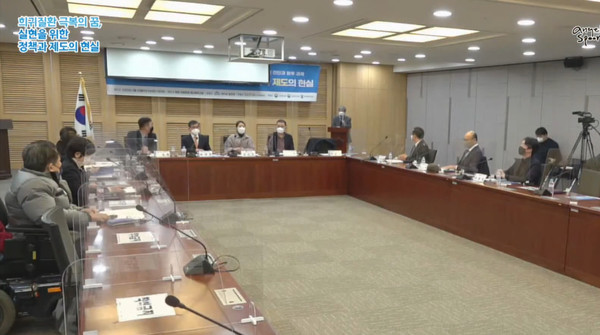The treatment environment for domestic patients with rare diseases is still poor, experts said. Thus, they emphasized that the government should improve the healthcare system to make better access to treatment and expand medical infrastructure.
On Wednesday, the Korean Organization for Rare Diseases organized a forum where health experts discussed how to improve treatment access for patients with rare diseases.
Rep. Kang Sun-woo of the Democratic Party hosted the event.
Samsung Medical Center Cardiology Division Professor Jeong Eun-seok said rare disease patients have poor treatment access. He cited amyloidosis as an example.

In amyloidosis, proteins such as immunoglobulin or transthyretin (TTR) infiltrate organs and cause functional deterioration. If the heart is infiltrated, the mortality rate is only about 40 percent within one year.
“To treat amyloidosis in Korea, doctors should use therapies in the right order, just like when treating multiple myeloma. Doctors can use the next-stage drug only when the previous-stage drug was not effective,” Jeon said. “Even with early diagnosis, 30 percent of patients with a cardiac infiltration die after six months. Patients cannot wait for all these processes.”
Pfizer’s Vyndaqel (tafamidis meglumine) and Vyndamax (tapamidis) received the local permit. Still, it is not used often because it is highly-priced, and the government has yet to set the reimbursement price.
According to Jeon, only three Korean patients are using Vyndamax paying the total price. Out of 100 patients with cardiac infiltration induced by ATTR amyloidosis, 50 are using the drug-free of charge.
“It is possible to detect and treat amyloidosis early. If we could treat it actively in early stages, we can lower the early-stage mortality rate significantly,” he said.
Jeon also called for improved medical infrastructure for patients with rare diseases.
A cardiologist sees only one to three amyloid patients annually, making it difficult for doctors to accumulate diagnosis and treatment experience. “If there is a national center specializing in rare disease care, the prognosis of patients with rare diseases will improve significantly,” he added.
Kim Min-young, director at the Korea Research-based Pharma Industry Association (KRPIA), said the government should revise the economic feasibility evaluation exemption system to enhance health insurance benefits for rare diseases and improve treatment access.
Citing data of the National Health Insurance Service (NHIS) and the Health Insurance Review and Assessment Service (HIRA), Kim said the proportion of drugs exempt from the economic evaluation is estimated to be less than 0.5 percent of the total drug cost of health insurance.
Rare diseases that do not threaten survival but lower quality of life chronically and those affecting a tiny number of patients might not be included in the exceptional cases for rare disease drug reimbursement. Still, they should become subject to the economic evaluation exemption.
The government said it would include a plan to guarantee treatment access in the second comprehensive plan for rare diseases.
the government was cautious about introducing the “reimbursement first and evaluation later” system, saying the current consulting method with a pharmaceutical company over clinical usefulness and cost-effectiveness evaluation is not much different from the proposed idea.

